观星指南(2022年9月)
九月份的天空会发生什么?火星在移动,木星的最佳观测时间,以及一个在秋分点寻找方位的巧妙方法。
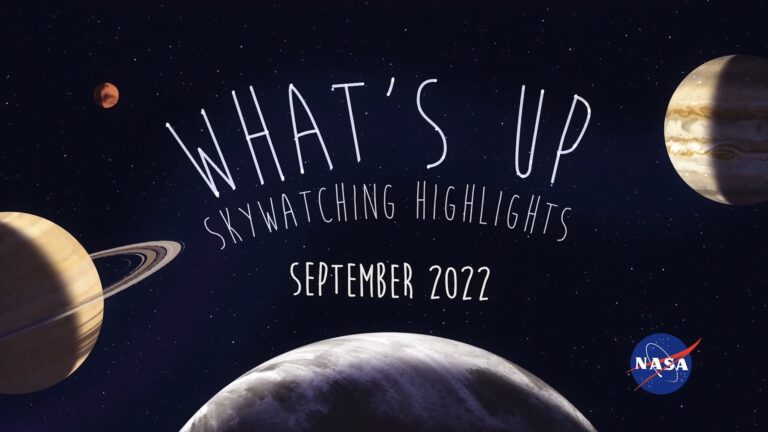
九月份的天空会发生什么?火星在移动,木星的最佳观测时间,以及一个在秋分点寻找方位的巧妙方法。
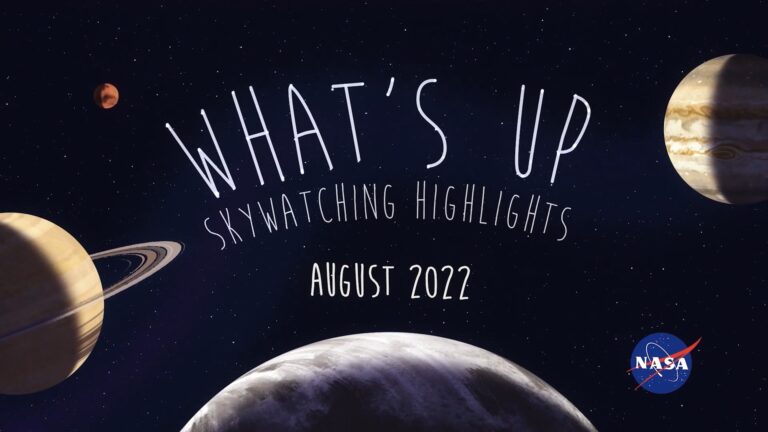
八月份的天空会发生什么?拿起你的双筒望远镜来观测行星,展望英仙座,以及和天鹅座一起翱翔。
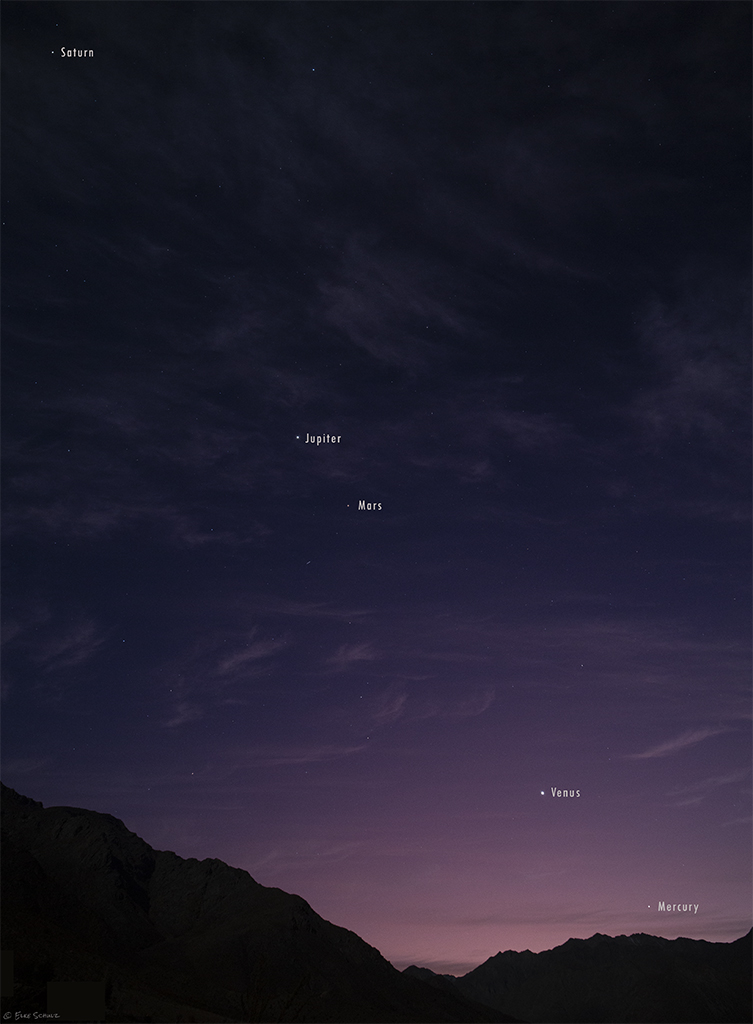
2022年6月17日 Good Morning Planets from Chile Image Credit & Copyright: Elke Schulz (Daniel Verschatse Observatory) Explanation: On June 15, innermost planet Mercury had wandered about as far from the Sun as it ever gets in planet Earth’s sky. Near the eastern horizon just before sunrise it stands over distant Andes mountain peaks in this predawn snapshot from the valley of Rio Hurtado in Chile. June’s other morning planets are arrayed above it, as all the naked-eye planets of the Solar System stretch in a line along the ecliptic in the single wide-field view. Tilted toward the north, the Solar System’s ecliptic plane arcs steeply through southern hemisphere skies. Northern hemisphere early morning risers will see the lineup of planets along the ecliptic at a shallower…
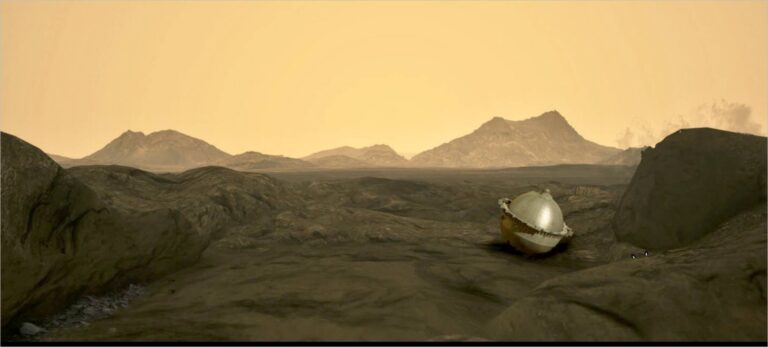
在最近发表的一篇论文中,NASA的科学家和工程师提供了有关该局稀有气体、化学和成像深大气层金星调查任务(Deep Atmosphere Venus Investigation of Noble gases, Chemistry, and Imaging , DAVINCI)的新细节,该任务将于2031年中期穿过金星的多层大气到达金星表面。达芬奇是第一个利用航天器飞掠和降落探测器研究金星的任务。 飞行分析化学实验室达芬奇将首次测量金星大规模大气气候系统的关键方面,其中许多自20世纪80年代初以来一直是金星的测量目标。它还将提供金星山地高地的首次降落图像,同时以轨道不可能的尺度绘制其岩石成分和地表地形。该任务支持对少量存在的未发现气体和最深处大气的测量,包括氢同位素的关键比例——水的组成成分,有助于揭示水的历史,无论是液态水海洋还是早期大气中的蒸汽。 该任务的运载器、中继和成像航天器(CRIS)有两个机载仪器,它们将在飞掠金星时研究该行星的云层并绘制其高地区域,还将放置一个带有五个仪器的小型降落探测器,在其降落到地狱般的金星表面时以非常高的精度提供一系列新的测量结果。 “这组化学、环境和降落成像数据将描绘出一幅金星大气层分层的画面,以及它如何与阿尔法雷吉奥山脉的表面相互作用,阿尔法雷吉奥山脉的面积是德克萨斯州的两倍。”《行星科学杂志》论文的主要作者、马里兰州NASA戈达德太空飞行中心的达芬奇首席研究员吉姆·加文说。“这些测量将使我们能够评估大气的历史方面,并检测表面的特殊岩石类型,如花岗岩,同时还可以寻找可以告诉我们侵蚀或其他形成过程的景观特征。” 达芬奇深大气层探测器穿过金星稠密的二氧化碳大气层,下降到阿尔法雷吉奥山脉。 影像来源:NASA’s Goddard Space Flight Center 达芬奇将利用金星的三次重力辅助,利用金星的重力改变CRIS飞行系统的速度和/或方向,从而节省燃料。前两次重力协助将为CRIS提供金星飞掠的机会,在紫外线和近红外光下进行遥感,获取超过60GB的有关大气和地表的新数据。第三次金星重力辅助将使航天器释放探测器,以便进入、下降、科学和着陆,以及后续向地球传输数据。 金星的首次飞掠将在发射后六个半月进行,在“正午”的理想照明下,探测器将需要两年的时间才能进入阿尔法地区的大气层,目标是测量金星的景观,测量尺度从328英尺(100米)到1米以上。这样的尺度可以在金星山区进行着陆器式地质研究,而无需着陆。 一旦CRIS系统距离金星大约两天,探测器飞行系统将与直径为三英尺(一米)的钛制探测器一起安全释放。该探测器将在距离金星表面约75英里(120公里)处开始与金星上层大气相互作用。这艘科学探测器将在离金星地面约42英里(67公里)处丢弃隔热罩后开始科学观测。随着隔热板的丢弃,探测器的入口将吸收大气中的气体样本,以进行详细的化学测量,就像好奇号火星车在火星上所做的那样。在长达一小时的下降过程中,探测器在离金星地面约100,000英尺(30500米)的云层下一出现,就会获得数百张图像。 “探测器将在阿尔法雷吉奥山脉着陆,但着陆后无需操作,因为所有必需的科学数据都将在到达地表之前采集。”戈达德副首席调查员斯蒂芬妮·盖蒂说。“如果我们能以大约25英里/小时(12米/秒)的速度成功着陆,在理想条件下,我们可以在地面上进行长达17-18分钟的作业。” 达芬奇暂定于2029年6月发射,2031年6月进入金星大气层。 “之前在金星大气层内的任务没有一次像达芬奇探测器那样详细地测量过化学成分或环境。”加文说。“此外,之前没有任何金星任务降落在金星的特塞拉高地,也没有进行过金星表面的下降成像。将以惠更斯探测器在土卫六所做的工作为基础,并改进以前的金星原位任务所做的工作,但将具备21世纪的能力和传感器。” NASA戈达德是达芬奇的主要研究机构,将为任务执行项目管理,提供科学仪器以及项目系统工程,以开发探测器飞行系统。戈达德还与来自美国各地的外部科学团队一起领导项目科学支持团队。像达芬奇这样的发现计划级任务补充了NASA更大的“旗舰”行星科学探索,目的是通过使用更少的资源和更短的开发时间发射更多的小型任务,从而取得优异的成果。它们由阿拉巴马州亨茨维尔马歇尔航天飞行中心行星任务项目办公室为NASA行星科学部管理。 达芬奇的主要合作伙伴包括科罗拉多州丹佛市洛克希德·马丁公司、马里兰州劳雷尔市约翰·霍普金斯大学应用物理实验室、加利福尼亚州帕萨迪纳市NASA喷气推进实验室、加利福尼亚州圣地亚哥市马林空间科学系统公司、弗吉尼亚州汉普顿市NASA兰利研究中心、加利福尼亚州硅谷莫菲特联邦机场NASA艾姆斯研究中心、亚利桑那州坦佩市的KinetX公司,以及位于安娜堡的密歇根大学。 如欲了解有关NASA达芬奇任务的更多信息,请访问: https://ssed.gsfc.nasa.gov/davinici 参考来源: https://www.nasa.gov/feature/goddard/2022/nasa-s-davinci-mission-to-take-the-plunge-through-massive-atmosphere-of-venus
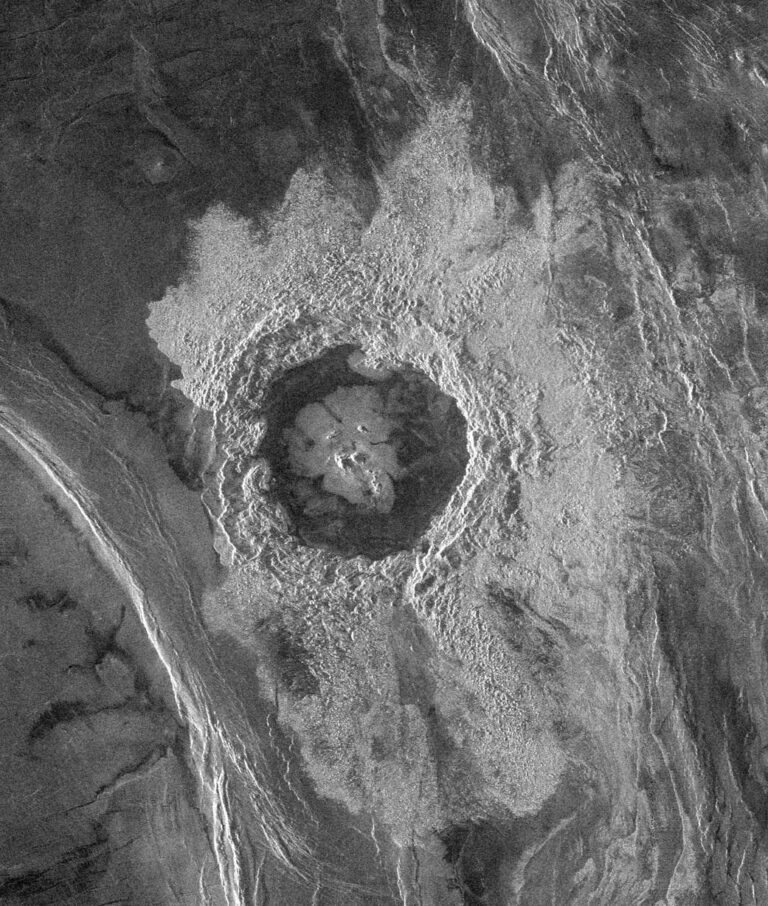
This November 1996 image from Magellan shows Dickinson, an impact crater in the northeastern Atalanta region of Venus. The image is approximately 115 miles (185 kilometers) wide at the base and 43 miles (69 kilometers) in diameter. The crater is complex, characterized by a partial central ring and a floor flooded by radar-dark and radar-bright materials. Hummocky, rough-textured ejecta extend all around the crater, except to the west. The lack of ejecta to the west may indicate that the impactor that produced the crater was an oblique impact from the west. Extensive radar-bright flows that emanate from the crater’s eastern walls may represent large volumes of impact melt, or they may be the result of volcanic material released from the subsurface during the cratering event….
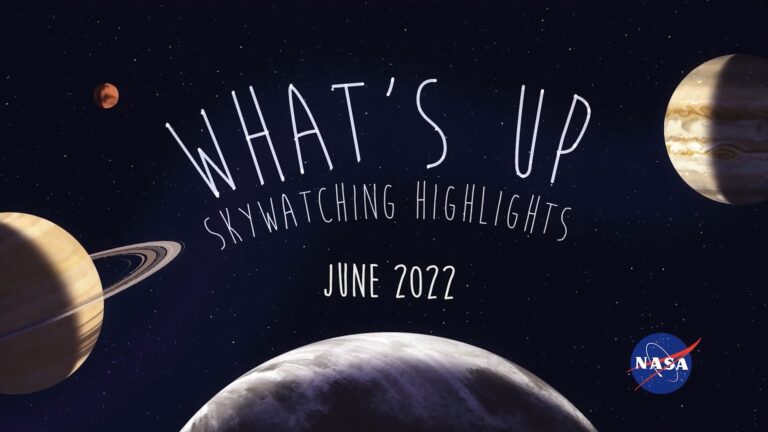
6月份的天空会发生什么?行星解体,知名星团和天琴座的最佳观测。
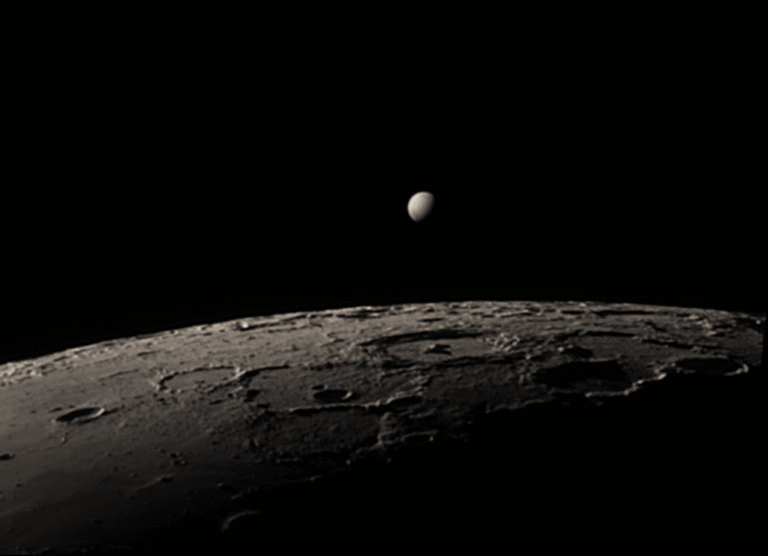
2022年6月2日 Lunar Occultation of Venus Image Credit & Copyright: Quentin Gineys Explanation: On May 27 Venus rose as the morning star, near the waning crescent Moon in a predawn sky already full of planets. It was close on the sky to the Moon’s crescent and a conjunction of the second an third brightest celestial beacons were enjoyed by skygazers around the world. But seen from locations along a track through southeast Asia and the Indian Ocean the Moon actually passed in front of Venus in a lunar occultation. In this animated gif the 75 percent illuminated disk of Venus approaches and just begins to disappear behind the sunlit southwestern lunar limb. The telescopic frames used to construct it were captured from Reunion Island in the…
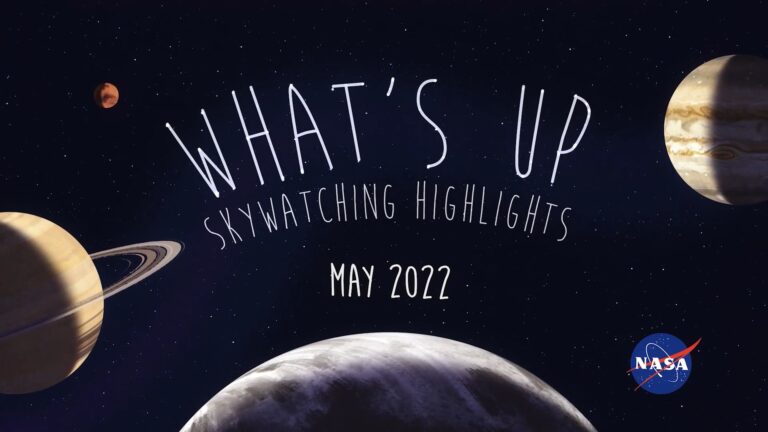
5月份的天空会发生什么?昏星和晨星,月食和后发星系团。

4月份的天空会发生什么?行星近合和北斗七星中隐藏的惊喜。
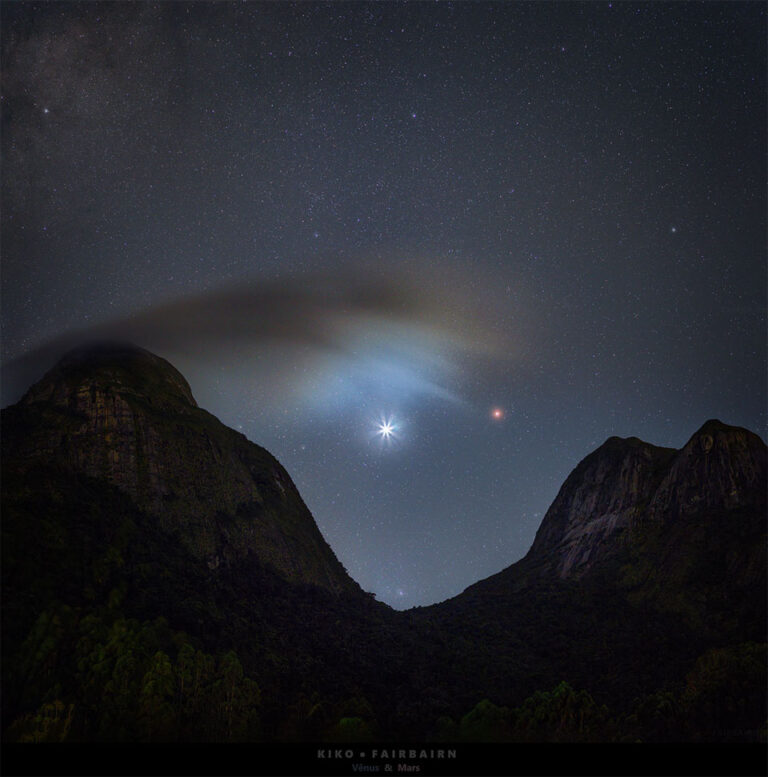
2022年3月29日 Venus and Mars: Passing in the Night Image Credit & Copyright: Carlos Kiko Fairbairn Explanation: When two planets pass on the night sky, they can usually be seen near each other for a week or more. In the case of this planetary conjunction, Venus and Mars passed within 4 degrees of each other earlier this month. The featured image was taken a few days prior, when Venus was slowing rising in the pre-dawn sky, night by night, while Mars was slowly setting. The image, a four-part mosaic, was captured in Brazil from the small town Teresópolis. Besides Venus and Mars, the morning sky now also includes the more distant planet Saturn. Of course, these conjunctions are only angular — Venus, Mars, and Saturn continue…